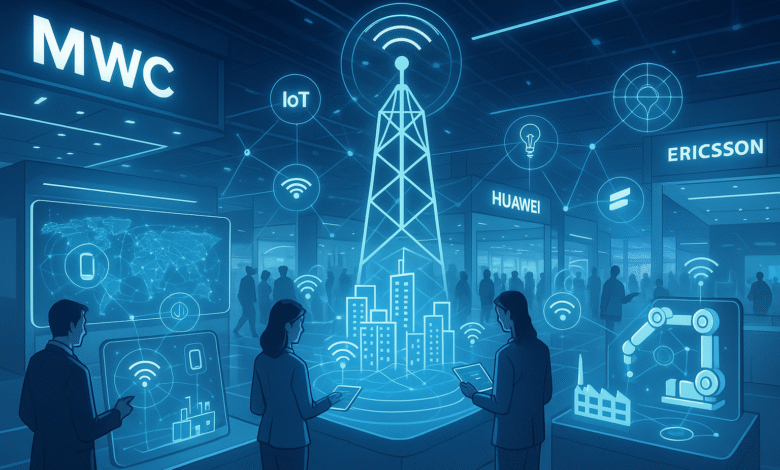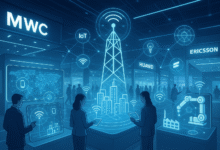Mobile World Congress: 5G and IoT Infrastructure Updates
Discover the latest 5G and IoT innovations at Mobile World Congress. Explore network infrastructure updates, emerging technologies, and industry trends.

The Mobile World Congress stands as the world’s most important gathering for the mobile technology industry. Each year, thousands of tech leaders, innovators, and industry experts converge to showcase the latest breakthroughs in wireless communication, 5G networks, and Internet of Things (IoT) solutions. This premier telecommunications event continues to shape the future of mobile connectivity and digital transformation across the globe.
What Makes Mobile World Congress the Premier Tech Event
The Mobile World Congress serves as the ultimate platform where mobile technology meets innovation. Since its inception, this annual conference has evolved into a massive showcase of cutting-edge wireless technologies, bringing together major telecom operators, device manufacturers, and software developers under one roof.
At recent Mobile World Congress events, the spotlight has intensely focused on 5G infrastructure developments and IoT ecosystem expansion. These technologies represent the backbone of our connected future, promising to revolutionize how we interact with digital services and smart devices.
The conference attracts over 100,000 attendees from more than 200 countries, making it a truly global celebration of mobile innovation. Tech giants like Samsung, Huawei, Nokia, and Ericsson regularly use this platform to unveil their most ambitious projects and technological breakthroughs.
5G Network Evolution: The Heart of Modern Connectivity
Current State of 5G Infrastructure
The fifth-generation wireless technology has matured significantly since its initial rollout. At the latest Mobile World Congress, industry leaders demonstrated how 5G networks now deliver unprecedented speed, ultra-low latency, and massive device connectivity capabilities.
Major telecom providers showcased their 5G network expansion plans, highlighting coverage improvements in urban and rural areas. These networks now support download speeds exceeding 10 Gbps in optimal conditions, fundamentally changing how we consume digital content and interact with cloud-based services.
The infrastructure behind 5G technology requires substantial investment in small cell networks, fiber optic connections, and advanced antenna systems. Mobile network operators are collaborating with infrastructure providers to ensure seamless coverage across different geographic regions.
5G Applications Transforming Industries
Healthcare applications represent one of the most promising areas for 5G implementation. Remote surgery, real-time patient monitoring, and telemedicine services benefit enormously from the ultra-reliable low-latency communication that 5G networks provide.
Manufacturing industries are embracing 5G-enabled smart factories where machines communicate instantly with each other. This connectivity enables predictive maintenance, quality control automation, and supply chain optimization that was previously impossible with older wireless technologies.
Autonomous vehicles rely heavily on 5G infrastructure for vehicle-to-everything communication. These systems require split-second data exchange to ensure passenger safety and traffic flow optimization in smart cities.
Challenges in 5G Implementation
Despite impressive progress, 5G deployment faces several significant challenges. Infrastructure costs remain substantial, particularly for rural area coverage where return on investment takes longer to materialize.
Spectrum allocation continues to be a complex issue as governments and telecom regulators work to balance commercial needs with public safety requirements. Different countries have adopted varying approaches to 5G spectrum auctions and licensing.
Energy consumption represents another major concern as 5G networks require more power than previous generations. Network operators are investing in renewable energy solutions and more efficient equipment to address environmental sustainability concerns.
IoT Infrastructure: Building the Connected World
The Expanding IoT Ecosystem
The Internet of Things landscape has experienced explosive growth, with billions of connected devices now communicating through various wireless protocols. At Mobile World Congress, exhibitors demonstrated how IoT solutions are transforming everything from smart homes to industrial automation.
IoT platforms now support diverse communication standards including WiFi, Bluetooth, Zigbee, and cellular connections. This diversity enables different types of devices to choose the most appropriate connectivity option based on their specific requirements for power consumption, range, and data throughput.
Edge computing integration has become crucial for IoT infrastructure, allowing data processing closer to connected devices. This approach reduces latency, improves response times, and minimizes bandwidth requirements for cloud-based services.
Smart City Applications
Urban environments are rapidly adopting IoT solutions to improve efficiency and quality of life for residents. Smart traffic management systems use connected sensors to optimize traffic flow and reduce congestion during peak hours.
Environmental monitoring networks track air quality, noise levels, and weather conditions in real-time. This data helps city planners make informed decisions about urban development and environmental protection measures.
Smart lighting systems automatically adjust brightness based on ambient conditions and pedestrian traffic. These solutions can reduce energy consumption by up to 50% while improving public safety through better illumination control.
Industrial IoT Revolution
Manufacturing facilities are implementing comprehensive IoT networks to monitor equipment performance and predict maintenance needs. These predictive analytics systems help prevent costly downtime and extend machinery lifespan.
Supply chain tracking has been revolutionized through IoT sensors that monitor temperature, humidity, location, and handling conditions for sensitive goods. This visibility helps ensure product quality and reduces waste throughout the distribution process.
Energy management systems use IoT devices to optimize power consumption across industrial facilities. Smart meters and automated controls help companies reduce operational costs while meeting sustainability goals.
Key Players and Innovations at Mobile World Congress
Major Technology Companies Leading Innovation
Samsung continues to push boundaries in 5G device development, showcasing smartphones, tablets, and network equipment that leverage advanced wireless capabilities. Their latest innovations focus on improving battery life while maintaining high-performance connectivity.
Ericsson has been instrumental in developing 5G infrastructure solutions that enable network slicing, allowing operators to create dedicated virtual networks for specific applications or customer segments.
Nokia’s contributions to Open RAN architecture are helping create more flexible and interoperable mobile networks. This approach reduces vendor lock-in and promotes innovation through standardized interfaces.
Qualcomm’s semiconductor solutions power many 5G devices and IoT applications, providing the processing power needed for advanced features like artificial intelligence and machine learning at the edge.
Emerging Companies and Startups
The Mobile World Congress startup ecosystem continues to thrive with innovative companies presenting solutions for niche markets and specialized applications. These companies often focus on specific vertical markets or unique technology approaches.
Many startups are developing IoT sensors for environmental monitoring, healthcare applications, and agricultural optimization. Their solutions often provide cost-effective alternatives to traditional monitoring systems.
Software companies are creating platforms that simplify IoT device management and data analytics. These tools help businesses deploy and maintain large-scale IoT networks without requiring extensive technical expertise.
Security Considerations in 5G and IoT Networks
Network Security Challenges
As connectivity expands through 5G and IoT deployments, cybersecurity becomes increasingly critical. The expanded attack surface created by billions of connected devices requires comprehensive security strategies.
Authentication and encryption protocols must be robust enough to protect sensitive data while remaining efficient enough to work on resource-constrained IoT devices. This balance presents ongoing challenges for security engineers.
Network slicing in 5G architecture introduces new security considerations as different virtual networks must be properly isolated while sharing the same physical infrastructure.
Privacy Protection Measures
Data privacy regulations like GDPR and CCPA require IoT deployments to implement privacy-by-design principles. This means considering data protection from the initial system design phase rather than adding it as an afterthought.
Edge computing helps address privacy concerns by processing sensitive data locally rather than transmitting everything to cloud servers. This approach reduces data exposure while maintaining functionality.
Anonymization and pseudonymization techniques help protect individual privacy while still enabling valuable data analytics for business and research purposes.
Future Trends and Predictions
6G Technology on the Horizon
While 5G networks continue expanding globally, researchers are already exploring sixth-generation wireless technology. Early 6G concepts focus on even higher speeds, lower latency, and integration with satellite networks for truly global coverage.
Artificial intelligence integration will become more sophisticated in 6G networks, enabling automatic network optimization and predictive maintenance capabilities that surpass current 5G implementations.
Holographic communications and extended reality applications represent potential killer applications for 6G technology, requiring unprecedented bandwidth and processing capabilities.
IoT Market Growth Projections
Industry analysts predict that IoT device deployments will continue growing exponentially over the next decade. Smart home devices, industrial sensors, and automotive applications are expected to drive much of this growth.
Standardization efforts are working to improve interoperability between different IoT platforms and protocols. This standardization will help reduce deployment complexity and improve user experiences.
Sustainability considerations are becoming increasingly important as the environmental impact of billions of connected devices becomes more apparent. Energy-efficient designs and recycling programs will become essential.
Business Impact and Economic Opportunities
Revenue Generation Models
5G and IoT technologies are creating new revenue opportunities for telecom operators beyond traditional voice and data services. Network slicing allows operators to offer premium services with guaranteed performance levels.
IoT platforms generate recurring revenue through device connectivity, data analytics, and managed services. This shift from one-time hardware sales to ongoing service relationships provides more predictable revenue streams.
Edge computing services represent another growing revenue opportunity as businesses seek to process data closer to their operations for improved performance and reduced latency.
Investment Requirements and ROI
Deploying comprehensive 5G and IoT infrastructure requires substantial capital investment from network operators and businesses. However, the operational efficiency gains and new service capabilities often justify these investments.
Return on investment timelines vary significantly depending on the specific application and market conditions. Dense urban areas typically provide faster ROI than rural deployments due to higher user density and service demand.
Government incentives and subsidies in many countries are helping offset deployment costs, particularly for rural area coverage and critical infrastructure applications.
Conclusion
The Mobile World Congress continues to serve as the premier showcase for 5G and IoT infrastructure innovations that are reshaping our connected world. From ultra-fast wireless networks to billions of smart devices, these technologies are creating unprecedented opportunities for businesses, governments, and consumers.
As we look toward the future, the convergence of 5G networks and IoT ecosystems promises to unlock new applications and services that we can barely imagine today. The foundations being laid at events like Mobile World Congress will support the next generation of digital transformation across industries.
The journey toward universal connectivity is far from complete, but the progress demonstrated at recent Mobile World Congress events shows that we are well on our way to a truly connected world where intelligent devices seamlessly communicate to improve efficiency, safety, and quality of life for everyone.
Success in this rapidly evolving landscape requires continuous innovation, strategic partnerships, and careful attention to security and privacy concerns. The companies and technologies highlighted at Mobile World Congress represent the cutting edge of this transformation, providing glimpses into our connected future.









